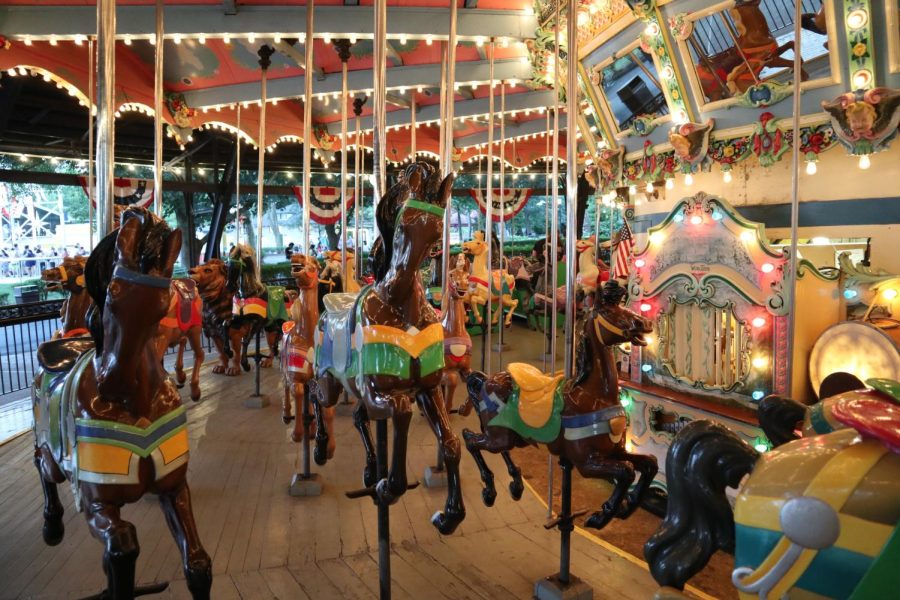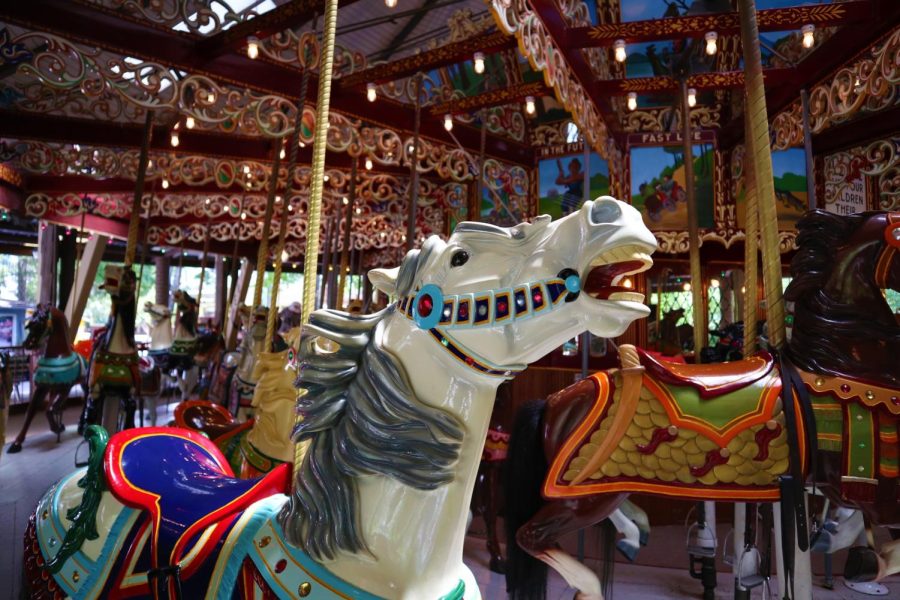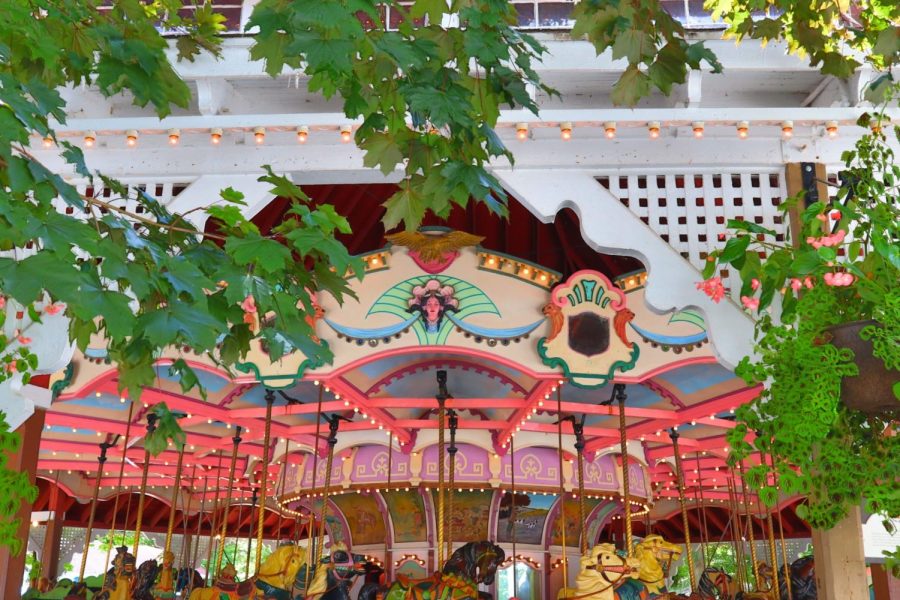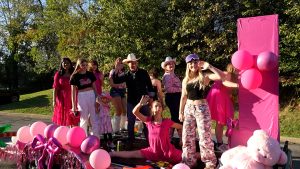A Grand Tradition of Amusement
Often overlooked, the grand carousel is the soul of a classic amusement park.
The Grand Carousel at Knoebels Amusement Resort is home to a once-common tradition that can only still be found on a few carousels: reaching for the brass ring.
December 12, 2022
In an age of 400-foot-tall roller coasters, the simplest amusement park rides of decades past are sometimes pushed to the sidelines, forgotten by the riders solely on an endless search for adrenaline. While teenagers sprint to a park’s flashy new ride, they often breeze past the merry-go-round, unable to look past its low-tech nature. The carousel is the oldest ride at most parks, and although it offers little in the way of thrills, it provides an important link to the origins of the American amusement park, a welcome callback among the fast-paced rides of today.
Despite the surprisingly creative explanations that can be found online, there is no difference between the terms “merry-go-round” and “carousel,” as the ride is called by either name at many parks. Regardless of what it’s called, the carousel is the one amusement park ride where you’ll see senior citizens enjoying themselves alongside the youngest of children.
Few other rides take everyone away from the cares of the world for a few minutes, which is the basic intention of any park. The escapism provided by an amusement park will always be defined by a carousel and its upbeat music, yet this ride gave many amusement parks their start at the turn of the 1900s, when streetcar companies would establish a picnic grove at the end of a trolley line to increase ridership on weekends.
It can be hard to recognize the difference between a wooden and fiberglass carousel with an untrained eye, but hand-carved wooden carousels exhibit the artistry of an earlier age, a time when amusement parks were beautiful as well as thrilling. Each horse or animal on a wooden carousel is a unique example of American folk art, carved from wood with the help of a master carver.
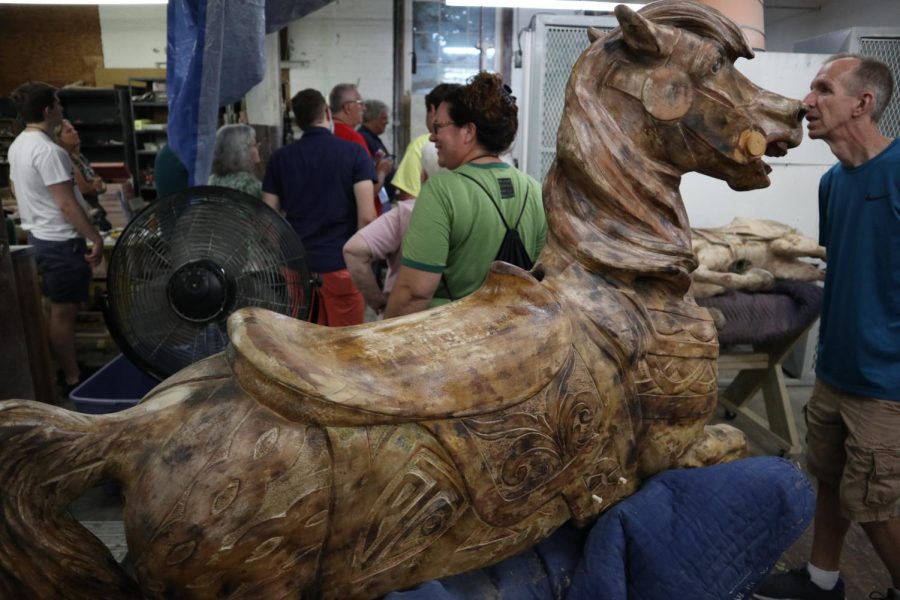
The earliest carousels in Europe used horses that were suspended from the ceiling of the ride. When the merry-go-round came to America, most figures were stationary at first, but the mechanism allowing horses to move up and down was introduced in the late 19th century. The American carousel industry was at its peak in the first two decades of the 1900s, as talented European immigrants applied their furniture carving skills to create carousel figures. Two major styles emerged during this time: the Coney Island Style, characterized by fantastic, detailed design, and the Philadelphia Style, which focused on more realistic figures.
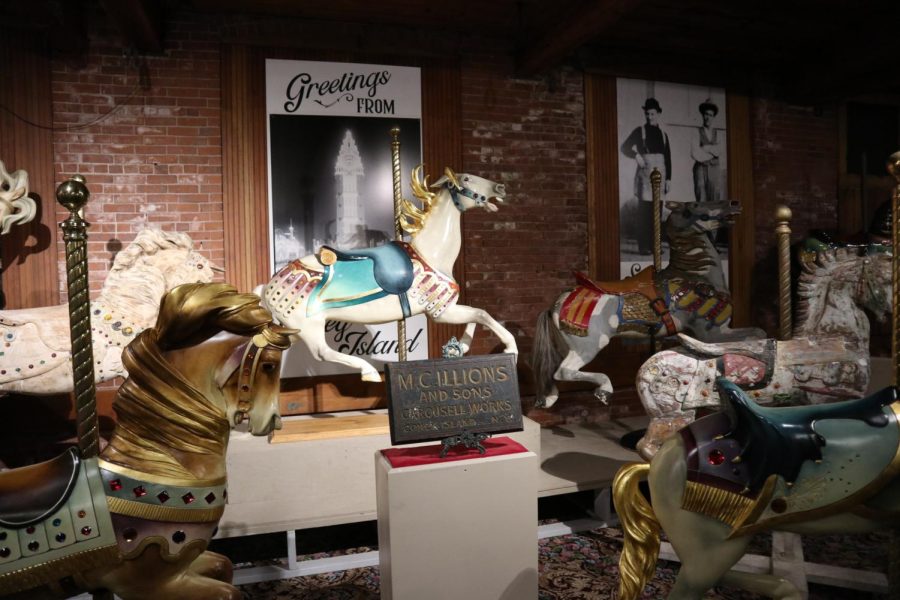
The Coney Island Style was named for the wonderful epicenter of amusement from which its carvers emerged, with the factories of Charles Carmel, Charles Loof, and the notably talented M.C. Illions turning out carousels in a flamboyant style bedecked with ornate trim and gold leaf. On the other hand, two long-established factories in Philadelphia produced the majority of classic carousels that still operate today. The G.A. Dentzel Co. and Philadelphia Toboggan Co. (PTC) were the most prolific carousel carvers of the Philadelphia Style, finding success in producing large carousels with similar figures. Most carousels made during this time were three or four rows wide, with the largest machines having an impressive five rows of figures.
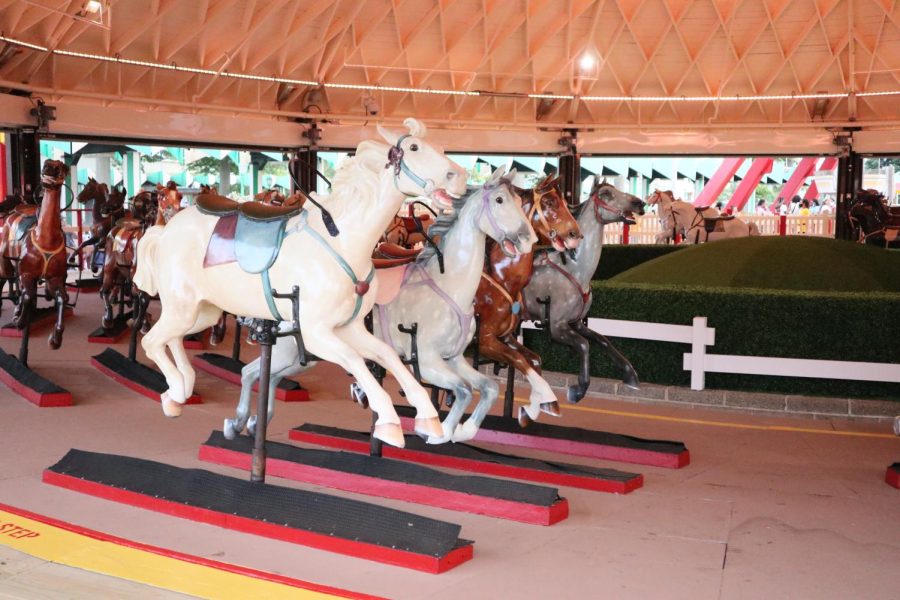
By the end of the 1920s, however, the market for carousels had largely been saturated, with only the Allan Herschell Co. continuing to produce smaller wooden machines through the 30s before becoming the primary supplier of fiberglass carousel figures. While most carousels built in the past century have been made of aluminum or fiberglass, classic wooden carousels are important intergenerational experiences, and when a park makes the senseless yet lucrative decision to sell its hand-carved carousel, it is often easy to tell that its days are numbered.
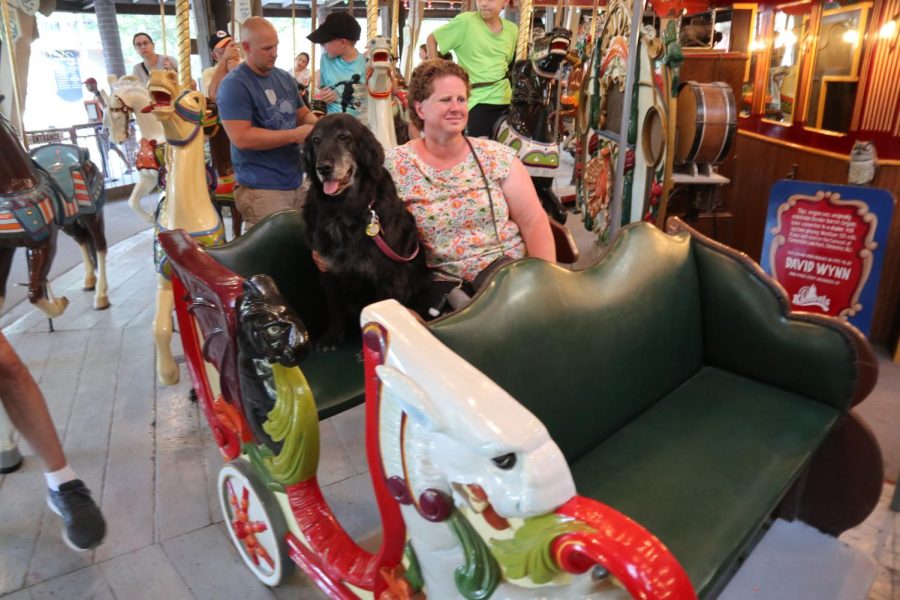
Spinning to the music of three antique band organs and carved by Charles Carmel, the Grand Carousel at Knoebels in Elysburg, PA is the undefeated winner of Amusement Today’s Golden Ticket Award for Best Carousel. Reaching for the brass ring dates back to the earliest days of carousels, yet this little-known tradition is still alive on only about a dozen carousels across the country. The concept is simple yet challenging: riders on the outside horses reach for a ring dispenser that hangs towards the carousel, with the hope of catching the one brass ring that entitles them to a free ride.
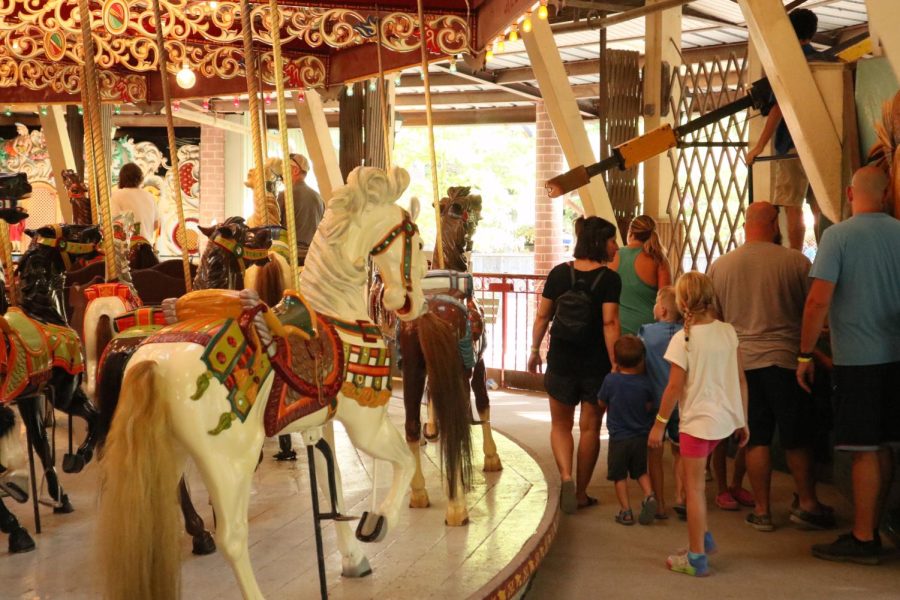
While the standing horses on the outside row are the least popular on most carousels, at Knoebels they are the first seats to be taken. As people hang off their horses with one hand reaching for the ring machine, one thing is clear: thanks to its family ownership, Knoebels is blissfully immune to the strict insurance regulations that have taken the risk-taking fun out of so many other amusement parks over the past half-century.
Although the Grand Carousel at Knoebels is unquestionably the best, the Kennywood merry-go-round will always be closest to my heart. The last carousel ever built by the legendary Dentzel factory, Kennywood’s carousel has spun in the same location for its entire 95 years of operation.
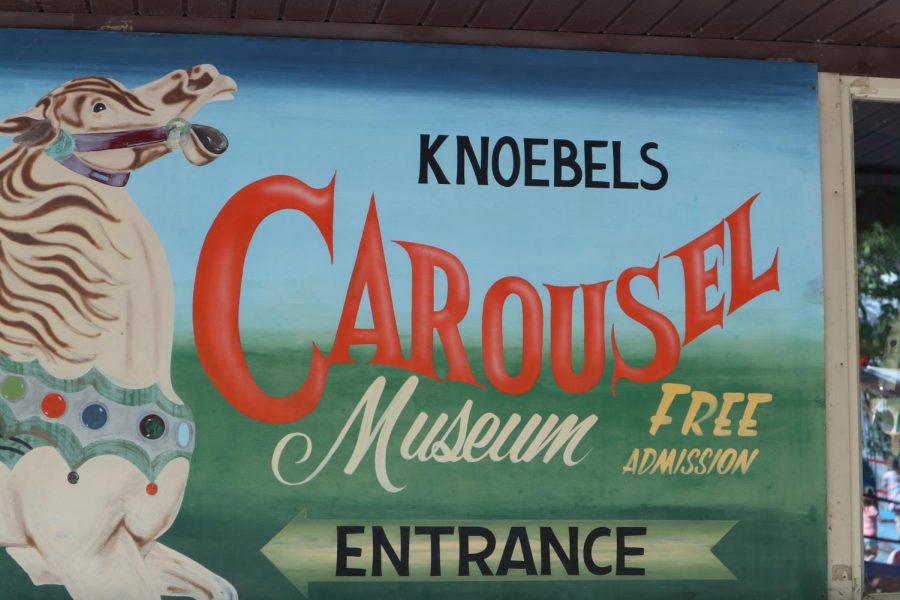
During Kennywood’s Holiday Lights event, the merry-go-round is one of the few rides open, meaning it is as popular as ever nearly a century after it was built. On a busy Saturday night, the line can wrap all the way around the ride, with operators loading nearly 100 riders at once. As the ride starts spinning to the traditional ringing of the bell, every rider is experiencing more than a simple ride; they are partaking in one of the oldest amusement park traditions.
While a carousel is a diversion at its heart, above all, its carefree nature is steeped in history.
